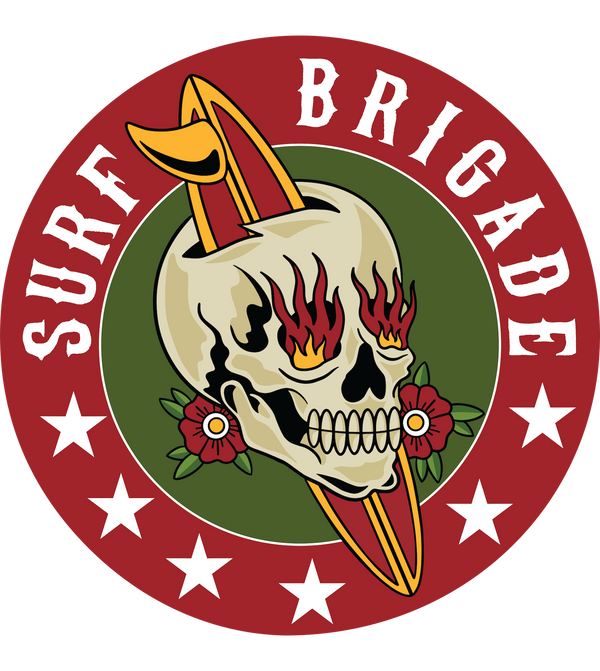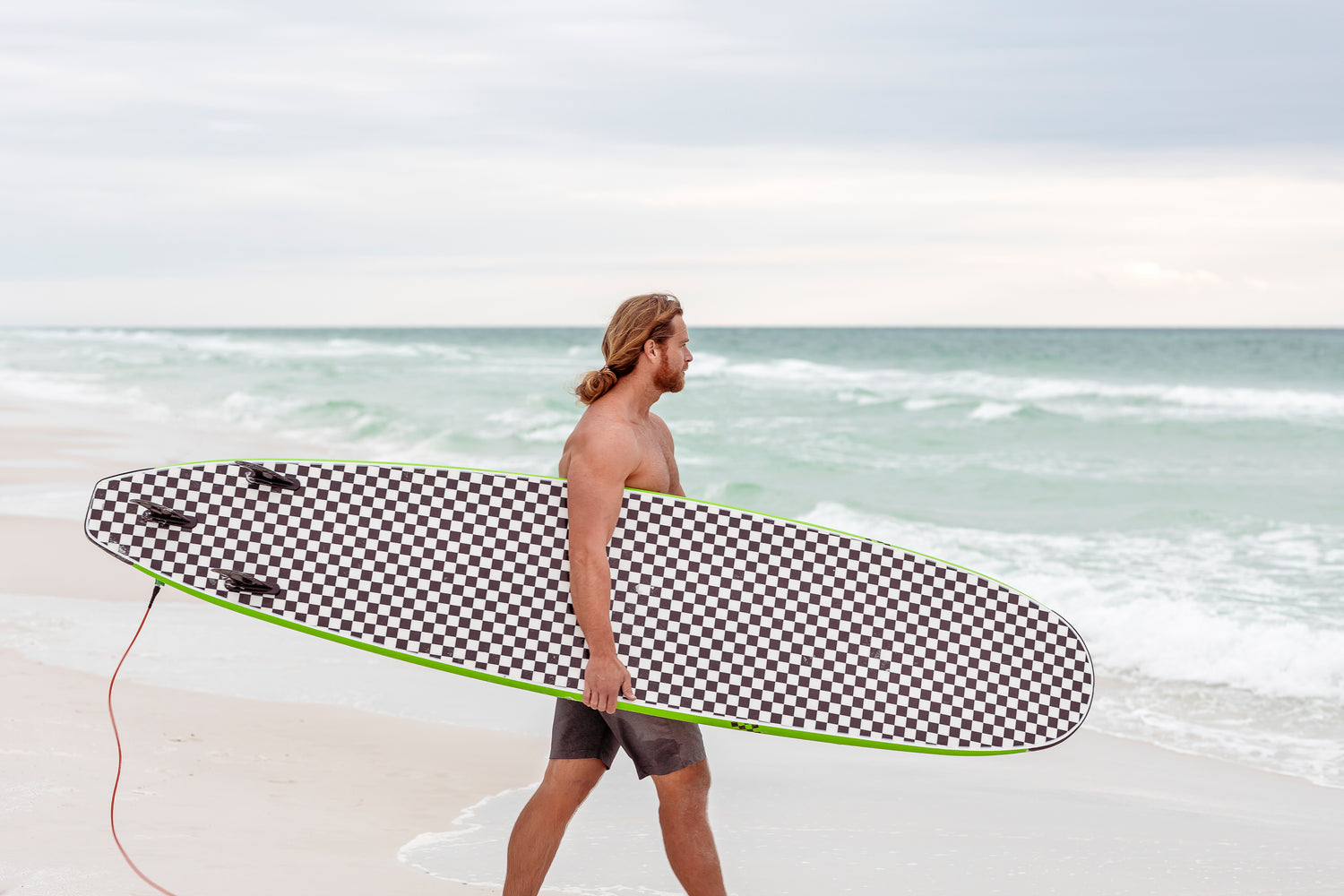Positioning and taking off on a surfboard are crucial skills for a surfer to catch and ride waves effectively. Here's a step-by-step explanation of how a surfer positions themselves and takes off on a wave:
Selecting the Right Wave: Before positioning and taking off, a surfer needs to choose a suitable wave. Waves come in different sizes and shapes, and an experienced surfer will assess factors like wave height, shape, direction, and power to determine which wave to paddle for.
Paddling: To catch a wave, the surfer lies on their board, prone (chest-down) or with their chest slightly up and uses their arms to paddle out towards the approaching wave. Paddling helps build momentum and allows the surfer to match the speed of the wave.
Spotting the Wave: As the wave approaches, the surfer needs to turn their head and look back towards the shore to spot the wave's position and gauge its speed and size. This helps the surfer time their paddle and positioning correctly.
Paddle Speed: Timing is crucial. The surfer needs to paddle with enough speed to match the wave's speed as it passes beneath them. Paddling too fast or too slow can affect the surfer's ability to catch the wave.
Paddling Transition: As the wave starts to lift the back of the surfboard, the surfer should transition from paddling to a position where they lie on their board, with their chest slightly up and their hands on either side of the board. This transition should be smooth and well-timed to maintain stability.
Positioning: Proper positioning on the board is essential for a successful takeoff. The surfer should have their body weight centered on the board and their feet positioned with the toes near the tail of the board. This balanced stance helps maintain control during the takeoff and ride.
Timing and Pop-up: As the wave pushes the surfboard forward, the surfer needs to execute a quick and fluid movement known as the "pop-up." This involves pushing up with the arms while simultaneously bringing the back foot forward and placing it between the hands. The front foot follows quickly, landing near the board's midpoint. This movement should be swift to avoid losing momentum.
Stance: Once the surfer is on their feet, they settle into a proper stance. The front foot should be slightly angled towards the front of the board, while the back foot is usually positioned sideways for stability. The knees are bent, and the surfer's weight is centered for balance.
Engaging the Wave: With a stable stance, the surfer begins to ride the wave by shifting their weight and making slight adjustments to maintain balance. The surfer can use their arms and body to control the direction and speed of the board.
Riding the Wave: As the surfer gains confidence and experience, they can perform maneuvers such as carving, trimming, bottom turns, and top turns to maximize their enjoyment of the wave. Successfully positioning and taking off on a wave requires a combination of timing, balance, agility, and wave knowledge. It's a skill that takes practice and experience to master, but with dedication and persistence, surfers can enjoy the exhilarating feeling of riding waves.
Improving at surfing takes time, practice, and dedication. Here are some tips to help you enhance your surfing skills:
Join Surf Brigade: Surf Brigade exists to introduce military and veterans to the concept of surf therapy, during which they will learn how to surf with other military and veterans.
Take Lessons: If you're a beginner, taking lessons from a qualified instructor is crucial. They can teach you the basics of paddling, balance, and wave-catching techniques. Even intermediate and advanced surfers can benefit from occasional lessons to refine their skills.
Practice Regularly: Like any sport, practice is essential. Try to get in the water as often as possible. Consistency will help you build muscle memory, improve your balance, and develop your surfing skills.
Improve Paddling Technique: Paddling efficiently is a fundamental aspect of surfing. Work on your paddling technique to catch more waves and spend less energy. Strengthen your upper body and core muscles to improve your paddling speed and endurance.
Understand the Ocean: Learn how waves work, including how they form, break, and break differently in various conditions. Understanding wave patterns, tides, currents, and local conditions will help you position yourself better in the lineup and catch more waves.
Choose the Right Equipment: Use the appropriate board for your skill level and the conditions you're surfing in. A larger, more stable board is generally better for beginners, while a smaller board provides more maneuverability for experienced surfers.
Improve Balance and Coordination: Engage in activities that enhance your balance and coordination, such as yoga, skateboarding, or other board sports. Better balance translates to better control on the waves.
Watch and Learn: Study videos of professional surfers to observe their techniques, positioning, and maneuvers. Analyze their body movements, how they read the waves, and how they execute tricks. There are a variety of online channels that offer video surf lessons that are valuable resources.
Build Physical Fitness: Surfing requires strength, endurance, and flexibility. Incorporate strength training, cardiovascular exercises, and stretching into your routine to improve your overall fitness and surfing performance.
Learn Etiquette and Safety: Understand and respect the unwritten rules of the lineup, such as taking turns and not dropping in on others' waves. Prioritize safety by being aware of your surroundings, watching out for other surfers, and knowing your limits.
Stay Patient and Persistent: Surfing is challenging, and progress may be slow at times. Stay patient, continue practicing, and celebrate small victories along the way.
Surf Different Breaks: Try surfing different types of breaks, from beach breaks to point breaks to reef breaks. Each type of break presents unique challenges and opportunities, helping you become a more versatile surfer.
Mental Preparation: Surfing requires focus, confidence, and a calm mind. Practice relaxation techniques and mindfulness to stay composed and make better decisions in the water.
Battle Buddy: Having a battle buddy creates an environment wherein you can encourage each other to continue surfing and improving, and also accountable for following through and staying committed.
Make surfing a priority: No one is going to do it for you. Check the report, plan your day around it, keep your gear prepped. This is your big mission now! Remember, surfing is not just about mastering the technical aspects; there are also therapeutic qualities found by being in the ocean, connecting with nature, and embracing the lifestyle. Embrace the learning process and have fun while improving your surfing skills.

